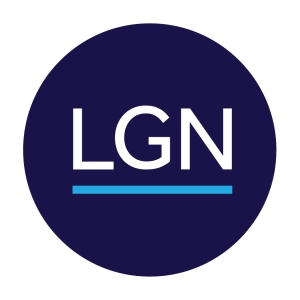Masks vs. Respirators
OSHA and MN OSHA distinguish between masks and respirators. Masks (homemade, paper, and non-surgical masks) provide some protection to those around the wearer from droplets, etc., if the wearer coughs or sneezes. These masks do not, however, provide the same level of protection for the wearer from inhaling particles or contaminates that is provided by a properly used and fitted respirator. See, Brosseau and Sietsema, Commentary: Masks-for-all for COVID-19 not based on sound data, April 1, 2020, Center for Infectious Disease Research and Policy. Even though masks are not considered personal protective equipment (PPE), MN OSHA has nonetheless established some guidelines for employers on their use, which are discussed below.
Respirators (including what most people refer to as “N95 masks”) are considered PPE and, if properly fitted and used, can provide protection for the wearer from the hazardous atmospheres and materials and agents for which the respirators are certified. Respirators are certified by the National Institute for Occupational Safety (NIOSH) or U.S. Department of Health and Human Services (HHS) and will bear a label or statement of certification telling the user what the respirator is designed for and how much protection it will provide if properly fitted and used.
Certain masks, face shields, and N95 respirators are also regulated by the FDA and are considered devices. When evaluating whether these products are intended for a medical purpose, among other considerations, the FDA will consider whether:
- They are labeled or otherwise intended for use by a health care professional;
- They are labeled or otherwise for use in a health care facility or environment; and
- They include any drugs, biologics, or anti-microbial/anti-viral agents.
Best Practices for Non-Regulated Masks
While there is no OSHA standard for masks, MN OSHA has provided the following guidance for the construction industry regarding the selection and use of masks in connection with COVID-19. Even though the guidance is focused on the construction industry, it nonetheless provides helpful information for all businesses in terms of best practices concerning the use of masks by their employees.
MN OHSA has stated that employers may require the use of masks or face-coverings to further slow the spread of COVID-19 and that employers should not prohibit the use of masks or face-coverings by employees. The construction industry guidance document includes recommended design features and best practices for putting on and removing masks. This guidance does not apply to respirators, the use of which by employees which is governed by OSHA regulations.
Design features for masks or face-coverings include:
- Covering of the face from the bridge of the nose to underneath the chin;
- Elastic-bands or ties to ensure it can be properly secured;
- A pliable band along the top to minimize gaps around the nose; and
- Double-layering of material, providing a pocket for a filter.
When putting a mask or face-covering on:
- Ensure it is properly laundered prior to each use;
- If desired, insert a filtering-medium into the pocket (optional);
- Properly position and secure it;
- Adjust the metal nose band, if provided; and
- Wash your hands after the mask or face-covering is secured.
When taking a mask or face-covering off:
- Avoid touching your mouth, nose and eyes;
- Remove and dispose of the filter, if used; and
- Immediately launder the mask after each use.
See, MN Dept. of Labor and Industry, COVID-19 in construction: Personal protective equipment and face-coverings. Note, however, the findings regarding the efficiency of masks in the article by Drs. Brosseau and Sietsema mentioned above. See, Brosseau and Sietsema, Commentary: Masks-for-all for COVID-19 not based on sound data, April 1, 2020, Center for Infectious Disease Research and Policy.
Assessing the Need for PPE
Under OSHA, the level of protection needed for an employee is based on the potential for exposure and each employer is required to assess the risk and need for PPE. See, 29 CFR 1910.132(d)(1). In connection with COVID-19, OSHA has created four categories of occupational risk exposure—very high, high, medium, and lower (caution). See, Guidance of Preparing Workplaces for COVID-19, pp. 18-20. This guidance document states that most workers will fall within the lower or medium risk categories. See, p. 18. Additional PPE for employees in lower risk categories is not recommended. See, p. 21. PPE may be warranted for employees in medium risk categories, see, pp. 22-23, and PPE is likely required for workers in the high and very high risk categories. See, p. 25.
Minnesota OSHA has created additional guidance documents concerning COVID-19 depending upon the industry (e.g., essential work operations, non-essential work operations, construction, manufacturing, dentistry, grocery stores, bait shops, golf courses, convenience stores). See, MN OSHA Compliance: Novel Coronavirus (COVID-19), Printable handouts).
Non-critical businesses in Minnesota are required to assess the work environment and determine what type of controls are required, including the need for PPE. See, MN OHSA, Equipment for COVID-19, non-critical businesses. While this guidance document notes that respirators are being prioritized for health care, laboratory, emergency response, mortuary, and food supply sectors (essential work operations), businesses that in their everyday operations require the use of PPE, including respirators, must still comply with the OSHA and MN OSHA requirements regarding their use.
Similarly, for essential work operations employers must do the following (among other things):
- Develop a Plan: Like any hazard, employers must ensure they are assessing the potential exposures of their employees and developing safe work-practices to minimize exposure. This applies to any workplace where employees are working with other people in the workplace
- Personal protective equipment (PPE): Employers must perform an assessment of the work activities conducted by their employees, and select and provide the proper personal protective equipment to their employees where other control measures cannot be implemented. Employers may need to provide proper PPE, such as gloves, gowns, face masks, face shields or goggles.
- Respirators: Employers should evaluate whether respirators are necessary. Respirators can be effective to protect employees who have to work in close proximity to each other and can be provided on a voluntary basis. The OSHA respiratory protection standard details the requirements for each type of use.
- Training: Employers must train their employees about the health hazards relative to COVID-19 exposure, including symptoms, modes of transmission and precautionary measures. Training resources are publicly available at www.osha.gov.
See, MN OSHA, Safety and health guidelines for the employers and
employees of essential work operations.
Respirators
If respirators are required based on the employer’s assessment of the risk, an employer must comply with the regulations concerning the selection, training, fit, medical suitability, etc., for the respirators. See, 29 CFR 1910.134. In addition, even if respirators are not required but are nonetheless provided or if an employee chooses to wear one, the employer must provide certain information to the employee pursuant to 29 CFR 1910.134, Appendix D, namely:
Appendix D to Sec. 1910.134 (Mandatory) Information for Employees Using Respirators When Not Required Under the Standard
Respirators are an effective method of protection against designated hazards when properly selected and worn. Respirator use is encouraged, even when exposures are below the exposure limit, to provide an additional level of comfort and protection for workers. However, if a respirator is used improperly or not kept clean, the respirator itself can become a hazard to the worker. Sometimes, workers may wear respirators to avoid exposures to hazards, even if the amount of hazardous substance does not exceed the limits set by OSHA standards. If your employer provides respirators for your voluntary use, or if you provide your own respirator, you need to take certain precautions to be sure that the respirator itself does not present a hazard.
You [the employee] should do the following:
- Read and heed all instructions provided by the manufacturer on use, maintenance, cleaning and care, and warnings regarding the respirators limitations.
- Choose respirators certified for use to protect against the contaminant of concern. NIOSH, the National Institute for Occupational Safety and Health of the U.S. Department of Health and Human Services, certifies respirators. A label or statement of certification should appear on the respirator or respirator packaging. It will tell you what the respirator is designed for and how much it will protect you.
- Do not wear your respirator into atmospheres containing contaminants for which your respirator is not designed to protect against. For example, a respirator designed to filter dust particles will not protect you against gases, vapors, or very small solid particles of fumes or smoke.
- Keep track of your respirator so that you do not mistakenly use someone else’s respirator.
Conclusion
- Masks and respirators are not the same. Masks and face-coverings are not regulated. Respirators are regulated by OHSA and MN OSHA and certified by NIOSH or HHS.
- Employers who have determined that respirators are required PPE in connection with COVID-19 must ensure that they comply with OSHA and MN OSHA regulations concerning the selection, training, fit, medical suitability, and use of the respirators by their employees.
- Employers who voluntarily choose to provide respirators or who have employees who choose to use their own respirators, must satisfy OSHA’s notice requirements concerning the non-required use of respirators.
- Employers may require employees to wear masks and cannot prohibit an employee from doing so. If an employer chooses to require that employees wear masks, the MN OSHA guidance on masks and face coverings for the construction industry provides guidance on the design of masks and face-covering and how they should be worn.



